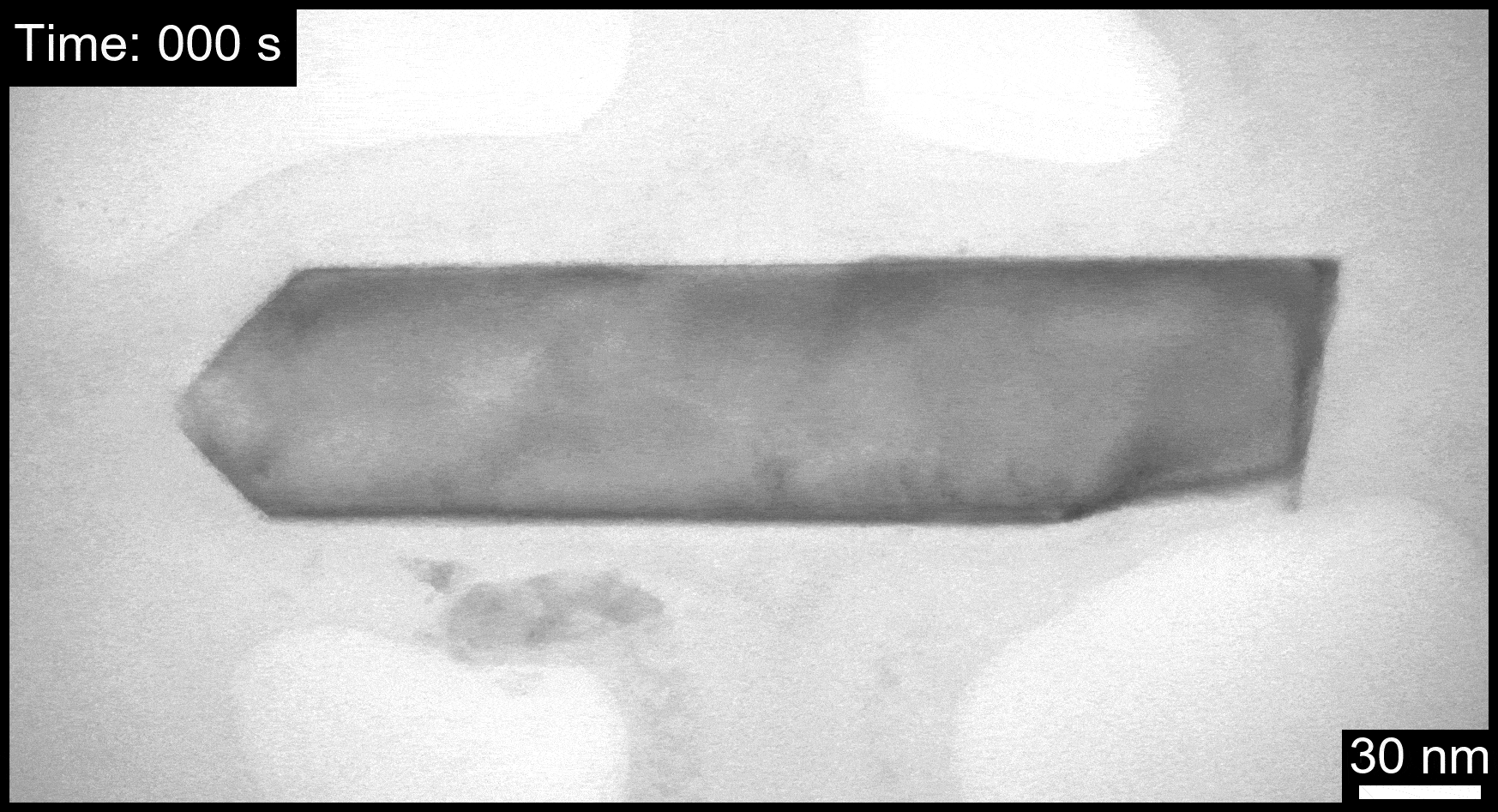| Apr 11, 2024 |
Nanoscale movies shed light on one barrier to a clean energy future
(Nanowerk News) Left unchecked, corrosion can rust out cars and pipes, take down buildings and bridges, and eat away at our monuments.
|
|
Corrosion can also damage devices that could be key to a clean energy future. And now, Duke University researchers have captured extreme close-ups of that process in action.
|
|
“By studying how and why renewable energy devices break down over time, we might be able to extend their lifetime,” said chemistry professor and senior author Ivan Moreno-Hernandez.
|
|
In his lab at Duke sits a miniature version of one such device. Called an electrolyzer, it separates hydrogen out of water, using electricity to power the reaction.
|
|
When the electricity to power electrolysis comes from renewable sources such as wind or solar, the hydrogen gas it churns out is considered a promising source of clean fuel, because it takes no fossil fuels to produce and it burns without creating any planet-warming carbon dioxide.
|
|
A number of countries have plans to scale up their production of so-called “green hydrogen” to help curb their dependence on fossil fuels, particularly in industries like steel- and cement-making.
|
|
But before hydrogen can go mainstream, some big obstacles need to be overcome.
|
 |
| It might look like little more than a dark speck, but this tiny crystal of ruthenium dioxide -- shown here in the process of corroding -- could be one of the keys to a clean energy future: It turns water into hydrogen. Using nanoscale imaging techniques, Duke researchers are trying to understand why these catalysts break down and lose activity over time. (Image: Avery Vigil, Duke University)
|
|
Part of the trouble is electrolyzers require rare metal catalysts to function, and these are prone to corrosion. They’re not the same after a year of operation as they were in the beginning.
|
|
In a study published in the Journal of the American Chemical Society ("Dissolution Heterogeneity Observed in Anisotropic Ruthenium Dioxide Nanocrystals via Liquid-Phase Transmission Electron Microscopy"), Moreno-Hernandez and his Ph.D. student Avery Vigil used a technique called liquid phase transmission electron microscopy to study the complex chemical reactions that go on between these catalysts and their environment that cause them to decay.
|
|
You might remember from high school that to make hydrogen gas, an electrolyzer splits water into its constituent hydrogen and oxygen molecules. For the current study, the team focused on a catalyst called ruthenium dioxide that speeds up the oxygen half of the reaction, since that’s the bottleneck in the process.
|
|
“We essentially put these materials through a stress test,” Vigil said.
|
|
They zapped nanocrystals of ruthenium dioxide with high-energy radiation, and then watched the changes wrought by the acidic environment inside the cell.
|
|
To take pictures of such tiny objects, they used a transmission electron microscope, which shoots a beam of electrons through nanocrystals suspended inside a super-thin pocket of liquid to create time-lapse images of the chemistry taking place at 10 frames per second.
|
|
The result: desktop-worthy close-ups of virus-sized crystals, more than a thousand times finer than a human hair, as they get oxidized and dissolve into the acidic liquid around them.
|
|
“We're actually able to see the process of this catalyst breaking down with nanoscale resolution,” Moreno-Hernandez said.
|
|
Over the course of five minutes, the crystals broke down fast enough to “render a real device useless in a matter of hours,” Vigil said.
|
|
Zooming in hundreds of thousands of times, the videos reveal subtle defects in the crystals’ 3D shapes that create areas of strain, causing some to break down faster than others.
|
|
By minimizing such imperfections, the researchers say it could one day be possible to design renewable energy devices that last two to three times longer than they currently do.
|
|
“So instead of being stable for, say, two years, an electrolyzer could last six years. That could have a massive impact on renewable technologies,” Moreno-Hernandez said.
|

